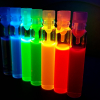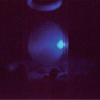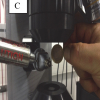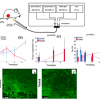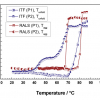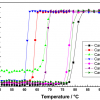Patrick Garidel
Boehringer Ingelheim Pharma GmbH & Co. KG, Process Science, Pharmaceutical Basic Development, D-88397 Biberach an der Riss, Germany. E-mail: [email protected]
Introduction
Over the last two decades therapeutic antibodies have become the fastest growing area in pharmaceutical biotechnology. The medical significance of these therapeutic entities is highlighted by the commercial availability of about 20 products on the market with more than 160 candidates evaluated in different clinical trials. One reason for the success of antibodies as therapeutic agents is related to the large advancement in their biotechnological production via fermentation. Nowadays titers of about 4 g L–1 in 11-day fed-batch mode using the CHO BI HEX process are achievable using CHO-cells (CHO: chinese hamster ovary).
The first products launched on the market were lyophilised dosage forms, requiring a reconstitution step before medical application. One reason for this was a lack of knowledge to stabilise antibodies in a liquid form, because a number of factors have a negative impact on protein stability in solution. Furthermore, in order to avoid protein loss during the process, e.g. due to the formation of aggregates, it is important in the early development phase to be able to screen rapidly and identify buffer conditions that may have a stabilising effect and avoid protein aggregation. Currently, formulations have been developed allowing storage of antibodies in a liquid form for two to three years at 2–8°C.
Compared to NCEs (new chemical entities) biologics are quite complex molecules and a number of methods are necessary to characterise their protein structure. Additionally in their early purification and pre-formulation development phase methods are required that utilise just very small amounts of proteins for the evaluation of solution conditions that allow the stabilisation of the protein. Fluorescence spectroscopy has the characteristics that may fulfil some relevant criteria for studying protein stability during the early development phase; these are: (i) being a very sensitive method, (ii) rapid, (iii) allowing the rapid screening of a number of solution conditions, (iv) requiring minimal chemometric data analysis, and (v) having the potential for automation. Although fluorescence spectroscopy does not usually provide detailed structural information, as, for example, X-ray or nuclear magnetic resonance, the method has some potential applications in pharmaceutical biotechnology, because of its acute sensitivity to changes in the structural and dynamic properties of proteins due to solvent variations. A number of fluorescence spectroscopic experiments are available and can be carried out at different levels ranging from straightforward measurements of steady-state emission intensity to more or less sophisticated time-resolved experiments. The combination of various fluorescence observables obtained under time-resolved conditions, in particular, has increased dramatically the interpretation of fluorescence results.6 However, for the relative evaluation of solution conditions with regard to protein stability, intrinsic fluorescence spectroscopy is quite useful, especially when combined with a well-defined thermal protocol, in order to characterise the thermal conformational stability of proteins in solution as a function of their solution properties.
The application presented in this article is therefore focused on steady-state intrinsic tryptophan protein fluorescence (ITF). Applications using extrinsic fluorescence labels are not considered. The results from steady-state intrinisic tryptophan protein fluorescence are compared to results obtained from other biophysical methods (infrared spectroscopy and high sensitive micro-calorimetry).









